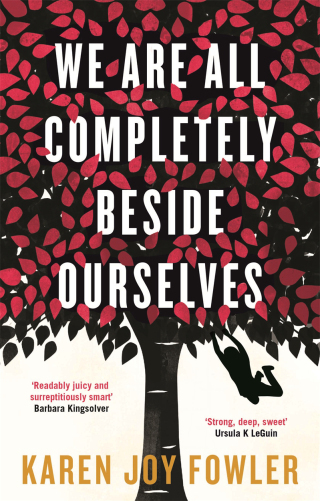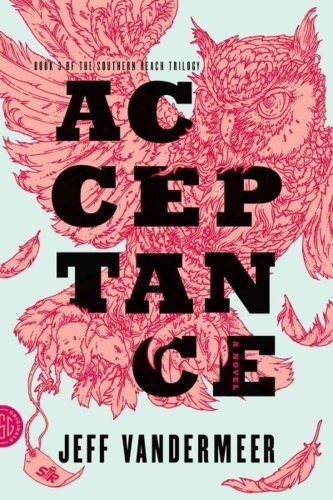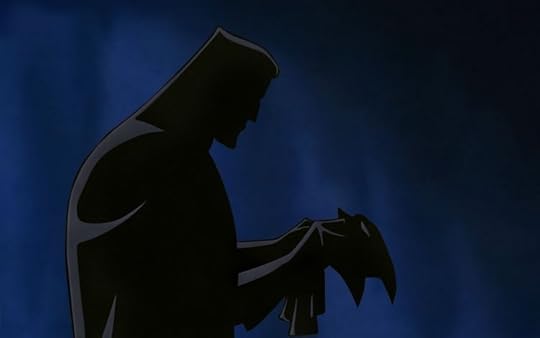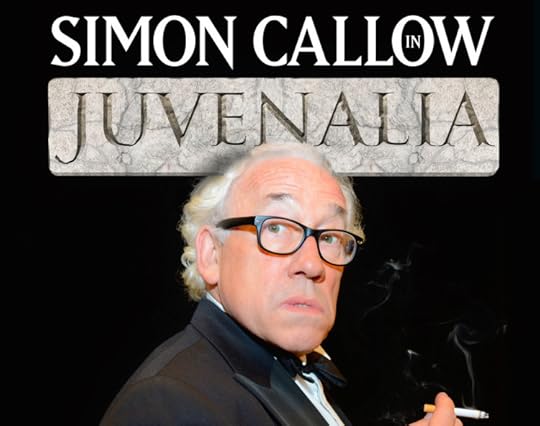Teodor Reljic's Blog, page 18
November 12, 2014
Song Covers I Prefer to the Originals
Sacrilege, etc.
*
Bush – In a Lonely Place
Original: Joy Division
Tiamat – Sympathy for the Devil
Original: The Rolling Stones
Beck – Diamond Dogs
Original: David Bowie
Marilyn Manson – Sweet Dreams
Original: The Eurythmics
Type O Negative – Paranoid
Original: Black Sabbath


October 27, 2014
Fuschiaing

Fuschia by Mervyn Peake
“The fuschia is shallow-rooting and hence requires frequent watering, so drainage must be fast enough to carry away all excess. A mulch of peat or sawdust will keep roots cool and supply moist air when watered frequently. You cannot overwater fuschias if the drainage is good … Growing fuschias in bush form is easy. You control shape of the plant by regular pinching or pruning. Shortening of the main branches and pinching back of shoots produces a busy, stocky plant. Leave the branches fairly long if you want a plant with a loose open habit of growth” – Joseph Buttigieg
*


October 7, 2014
Humaning

Christ Carrying the Cross by Hieronymous Bosch (Detail; c. 1515-1516)
“…recent studies suggest that people behave with more charity if they’ve just gone upstairs and less if they’ve just gone down – if studies like that weren’t just an enormous pile of crap. There’s science and there’s science, is all I’m saying. When humans are the subjects, it’s mostly not science.” – Karen Joy Fowler
*


October 6, 2014
Bits of October | The Favourite Season

Eye of the storm: M’Scala, Malta, 05/10/14
The heat has finally decided to recede but the weather is still nice – October is equivalent to spring in Malta but it comes with Halloween attached, therefore it wins.
Traditionally associated with decay, the season has actually borne some fruit for me already, so it’s just a matter of maintaining a productive momentum now.
Some moments to boast about, because that’s how the web-generation rolls.
*

Custom dust jacket by The Secret Rose
The New Weird anthology of short fiction and essays (edited by Ann and Jeff VanderMeer) may not be the absolute best and/or influential book I’ve ever read, but it’s had a strong enough impact on my post-adolescence creative life to warrant at least its own custom dust jacket.
The anthology introduced me to M. John Harrison – ‘The Luck in the Head’ is proof that genre-inflected surrealism could really be a thing, with atmosphere to boot – and it made me sit up and pay attention to Clive Barker, as ‘In the Hills, the Cities’ showed me that far from being superficial trafficker in splatter, Barker is interested in tapping into the primoridal (at a stretch, ‘pagan’) strain of horror fiction. It has even led to friendship, as Alistair Rennie’s blistering, shocking and hilarious ‘The Gutter Sees the Light that Never Shines’ (the only original story in the anthology) made me seek out the author online, and a couple of years later I found myself sitting on the sofa of his plush Edinburgh pad showing him a video recording of a round-robin reading my friends and I performed of the story (in funny voices).
Its carnivalesque meld of genre elements and literary fiction made me feel like kindred spirits were around: that I could consolidate my since-childhood love of genre fiction with a newfound love of carefully constructed language and intertextual lit games. This spark was an extra kick in the butt to kick-start one of my enduring (collaborative) passion projects, Schlock Magazine, and the addendum essays gave a necessary backbone to my MA dissertation on the New Weird.
I knew my friend Sarah Micallef – aka The Secret Rose – would be able to meet this challenge, and then some.
Click here to get the full lowdown on how she put this baby together.
*
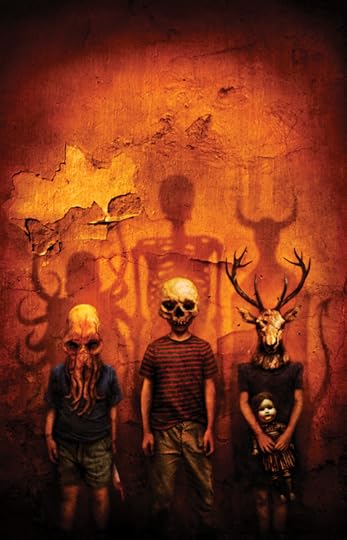
Cover illustration by Vincent Chong
Speaking of Schlock, this month we’re resurrecting from our summer-slumber (blame the aforementioned heat) just in time for – again – Halloween, and I’m quite happy with what’s in store.
Already up is our interview with prolific writer and editor of The Spectral Book of Horror Stories Mark Morris, along with a profile of Spectral publisher Simon Marshall-Jones.
I like the unsentimental approach Morris has towards fiction writing; an inevitable survival tool, perhaps, considering he’s written tie-in material for properties like Doctor Who, Spartacus and the Dead Island video game.
Here’s my favourite extended quote from the interview:
“I accepted the ‘Dead Island’ commission – an 80,000 word novel in four weeks, based on nothing more substantial than 15 pages of gaming notes. I panicked and sweated over that one for an hour or two after accepting it, and then knuckled down and within half a day produced a novel plan and writing schedule, which I stuck to rigidly. That then gave me the confidence to write a Spartacus novel, which again was an 80,000 words in four weeks job. I’d never seen the TV series and knew nothing about the ancient Roman Empire, but I said yes and just got on with it.”
In the weeks ahead we’ll also be featuring analyses on Penny Dreadful, along with an excellent essay on the ‘splatpunk’ horror sub-genre that delightfully skates a fine line between academic rigour and fannish enthusiasm.
Click here to read our full interview with Mark Morris.
*
It has also been a good season for reading so far. I’ve finished Karen Joy Fowler’s Booker-nominated We Are All Completely Beside Ourselves last night; having zipped through it in little over a week (a busy work week, I hasten to add). Though I think it’s ultimately not as hard-hitting and profound as it could have been (strong ideas are suggested but never allowed to fully take root), it remains an endearing and touching read. Fowler is clearly an effortless storyteller; there’s a fine balance of heart and mind all throughout, and the back-and-forth narrative is effervescent and rich.
On an entirely different tangent, Jeff VanderMeer’s conclusion to his Southern Reach trilogy was both obliquely satisfying and inspiring. To some readers’ frustration, Acceptance deliberately refuses to wrap up every single mystery at the heart of Area X. But I found its oblique approach to be its most powerful quality.
In fact, ‘oblique’ is what is best about both the VanderMeer and the Fowler book. Among other things, memory is Fowler’s theme, and the fragmented hopping back and forth of her narrator Rosemary is what lends the book both its charming conversational rhythm and uncanny poignancy.
VanderMeer, on the other hand, enhances his genre-collage by coming at everything sideways and leaving plenty of leftover gaps for the reader. Gaps which, thanks to his left-field manipulation of genre details, create a creepy – in the literal sense of ‘creeping’ – effect over the proceedings.
I will be talking about the Southern Reach Trilogy with my good friend Marco Attard, for an upcoming edition of his Pop Culture Destruction ‘Destructcast’.
*
The Southern Reach Trilogy is also about our mistreatment of the natural world and its enduring power despite all of this, so I was glad to experience some of nature’s wrath first-hand during a picnic-cum-hike at one of Malta’s few remaining spots of unblemished ‘nature’.
Far from being a damper on our outing, a sudden storm lent a welcome atmosphere to our company’s outing. We found shelter and watched the rain and lightning, and the mud-caked trip back ensured we experienced something of an adventure too.
I couldn’t have asked for a better way to usher autumn in (see image above).


September 25, 2014
Messaging

The Librarian by Giuseppe Arcimboldo (c. 1570). Source: Wikipedia
“At best, anyway, his ministry had been an odd assortment, attracting hippies and the straitlaced alike, because he’d pulled from the Old Testament and from deism, and the esoteric books available to him in his father’s house. Something his father hadn’t planned on: the bookshelves leading Saul to places the old man would rather he’d never gone. His father’s library had been more liberal than the man himself.
“The shock of going from being the centre of attention to being out of it entirely – that still pulled at Saul at unexpected times. But there had been no drama to his collapsed ministry in the north, no shocking revelation, beyond the way he would be preaching one thing and thinking another, mistaking that conflict, for the longest time, as a manifestation of his guilt for sins both real and imagined. And one awful day he’d realized that he was becoming the message.” – Jeff VanderMeer
*


September 24, 2014
Gotham Nights | Top Three Batman Adaptations
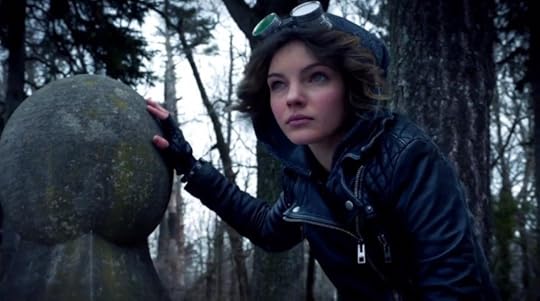
Carmen Bicondova as soon-to-be Catwoman Selina Kyle in Fox’s Batman prequel series Gotham
The Fox network’s Batman prequel series Gotham looks to be a solid but unremarkable bit of hokum, if this week’s pilot is anything to go by. An otherwise competent-enough police procedural, it relies far too heavily on Caped Crusader brand recognition, hoping that none-too-subtle “a-ha!” moments revealing an early version of Batman’s rouges gallery will be enough to make us sit up and pay attention for longer than a couple of episodes.
Still, its inaugural episode made me look back at some of my favourite Batman stories in non-comic book media. I’ve narrowed it down to a top three – a top three of features I don’t mind re-visiting on occasion.*
3) The Dark Knight (2008)

The late Heath Ledger as The Joker
There are only a handful of films I’ve watched in my life time that were bona-fide ‘events’ at the cinema. Not even a handful… off the top of my head I can think of two, maybe three films, tops, that weren’t just successful genre blockbusters but long-awaited, almost social events by dint of their pre-screening buzz and subsequent pop culture impact.
Star Wars: Episode I – The Phantom Menace (1999) was the first. Despite the fact that it disappointed me even though I was an easy-to-please kid at the time, George Lucas’ return to the sci-fi/fantasy world that made him a Hollywood pioneer felt like some kind of watershed moment: never mind its intrinsic worth as a film – it was a monumental gesture on Lucas’ part that bridged two generations of fandom, right at the cusp of the internet revolution, which lent fuel to the fire of its many detractors.
Following closely on its trail was a far less controversial film – though its sequels proved to be a fast-tracked mirror image to the disappointment caused by the Star Wars prequels – which I won’t hesitate to call a modern masterpiece: The Matrix; a cyberpunk collage which wore its homages proudly on its sleeve but which was also animated by a pioneering energy.
The Dark Knight was the third and final one that comes to mind – the only example I can think of from past adolescence.
There are several reasons why Christopher Nolan’s sequel to Batman Begins (2006) struck a chord with me (along with many, many others worldwide). Its escalating tempo perfectly mirrors the chaotic, all-pervasive nature of a terrorist attack (relentlessly topical for all of us post-9/11), with Nolan perfectly balancing blockbuster friendly action with what is now referred to a ‘grimdark’ approach to superheroics. But instead of coming across as too sombre for its own good, Nolan’s seriousness is both gripping and infectious. He commits to the material in a way that doesn’t feel preposterous or disproportionate, in a way that’s been justifiably compared to Michael Mann’s Heat (1995).
But it’s unsurprisingly Heath Ledger’s performance as the film’s key antagonist, The Joker, that keeps me returning to the film. Over and above the tragic romance of Heath Ledger being reported dead soon after the shoot wrapped, there’s something magnetic about his performance that makes it a joyous thing to experience.
Yes, it’s disturbing and dark – like his director, Ledger grabs the role by the collar and doesn’t let go, diving head-first into the nihilistic psychosis of his character. But despite being the orchestrator of the film’s panic and chaos, he’s above all fun to watch, a spirited grotesque in the spirit of Johnny Depp’s Jack Sparrow who is enjoyable to experience even in isolation, as his introduction to the parliament of Gotham mobsters amply displays (and rewards in repeat viewings).
2) Batman: The Mask of the Phantasm (1993)
The Paul Dini/Bruce Timm Batman Animated Series – as transmitted (and dubbed) on Italian TV – was one of the defining cartoons of my childhood. Apart from bolstering my love of Batman lore, it also imbued in me a love of film noir and Art Deco.
It gives us a Batman origin story beyond the my-parents-were-murdered sequence, as well as an uncharacteristic and finely fleshed out romance. There’s no bimbotic Vicki Vales here; in Andrea Beaumont Bruce Wayne gets a mirror image of his traumatic obsession. Also packing in a great Joker story, the feature-length ‘Phantasm’ exquisitely built on the foundations set by the animated series.
Playing into Batman’s noir appeal while remaining kid-friendly, it also maintains a certain decorum absent from subsequent – and concurrent – movie adaptations. It certainly has none of the camp excesses of the much-maligned Joel Schumacher films, and neither is it particularly close in tone to the comparatively toned down Tim Burton opening salvos.
That’s not to say it doesn’t have a flair for the theatrical – just wrap your ears around Shirley Walker’s theme tune for a rousing introduction to this inspiring labour of love.
1) Batman Returns (1992)

Feline fling: Michelle Pfeiffer and Michael Keaton in Batman Returns
Nolan gets all the accolades and Schumacher gets all the hate, but it’s Tim Burton’s second (and final) sequel to his soujourn in Gotham that stays with me to this day – to the point that I re-watch it every Christmas (the period in which the film is set, all the better to amplify its Gothic excess).
It is the only Batman film in the franchise that takes on the core absurdity of the DC Comics character and runs with it.
But it doesn’t run with it in the same way that Burton’s successor Joel Schumacher ran with it; turning it into a camp carnival of steel bat-nipples and shiny gadgets and architecture. In pitting Bruce Wayne/Batman against the double-menace of feral jewel thief Selina Kyle/Catwoman (the never-sexier Michelle Pfeiffer) and the orphaned freak-cum-underground mobster Oswald Cobblepot/The Penguin (the never-uglier Danny De Vito), Burton showed that he understood the inner workings of Batman and his rogues’ gallery.
It’s about watching mad people in costumes tearing each other apart (which is as far as you can get from the moralistic, dead-serious drama-thrillers of the latter-day Christopher Nolan trilogy).
The snowy pall of Christmas time over Gotham city only reinforces the stylistically-heightened panorama: a truly Gothic sight if there ever was one, and a more than apt rehearsal for that other Burton-sponsored classic, The Nightmare Before Christmas (1993).
*This, incidentally, remains the ultimate litmus test for me when it comes to deciding what is a ‘favourite’ – particularly in this day and age when daisy-chain social media gimmicks keep requesting us to make a favourite list of this or that. If you truly love something, you’ll keep coming back.


September 22, 2014
Getting it Ass-Backwards: ‘Booty’ and the Genre-Mainstream binary at LonCon

Jennifer Lopez and Iggy Azaela in the promotional video for Lopez’s single ‘Booty’.
Considering Iggy Azelea and Jennifer Lopez’s collaborative single ‘Booty’ as a pop single – complete with an accompanying promo video that is arguably more of an ‘event’ than the song itself – is, I think, a fundamental category error.
Taking the aesthetics of both the song lyrics and the video (dir. Hype Williams) into consideration, it becomes clear that what we have here is less to do with music and more to do with pornography.
This isn’t a moral statement, it’s purely a matter of taxonomy, for what it’s worth. When the morally enraged tend to point their guns at supposedly decadent pop culture artifacts, there’s often just enough ambiguity in the equation for them to come across as uptight fuddy-duddies to their opponents.
But it is difficult to make a claim for ambiguity when a song calls itself ‘Booty’ – thereby making it clear that its priorities are purely limited to amplifying the erotic appeal of the bodily feature in question. Though it could also be seen as a collaborative attempt to dethrone Nicky Minaj from booty-pop dominance, the Azelea/J-Lo duet is also something of no-brainer considering both singers have put their backsides as the forefront of their brand.
Their effort is also significantly different in degree to Destiny Child’s now-classic ‘Bootylicious’. Where Azelea/J-Lo repeatedly and aggressively thrust their sculpted backsides to the camera in an attempt to entrance us with their particular anatomical prowess, Beyonce and co. go anthemic: the song understandably became a rallying call for amply-bottomed women to celebrate their bodies. While DC don’t of course deny the intrinsic erotic value of her subject, ‘Bootylicious’ emphasizes a feel-good factor, calling on listeners to cultivate confidence in their bodies.
But as they participate in what is essentially a Booty Dream Team, Azelea/J-Lo, like good capitalists, collaborate purely to maximize their own assets (!), and empowerment for the big bootied masses is clearly not on their agenda (‘Prepare Audience For Maximum Impact’, an opening scroll teases in the song’s promo video).
It’s Booty Degree Zero, and can therefore be seen as nothing more than pornography – a fetishisation of the flesh bolstered by pinprick-precise brand management that has the advantage of a far larger budget than other productions we would be less ambivalent about filing under ‘Porn’.
*
The issue of taxonomy appears to be a consistent bugbear in some of my most frequented cultural circles: namely, the field of literature, particularly the strands of what can broadly be termed genre fiction when offset against what – again, with a disappointing short-hand – can be termed ‘mainstream’ literature.
It was a distinction – one with any number of attendant polemics – that appeared once again as a consistent theme during my visit to LonCon (or WorldCon) – a predominantly science-fiction based convention that took place in London in mid-August.
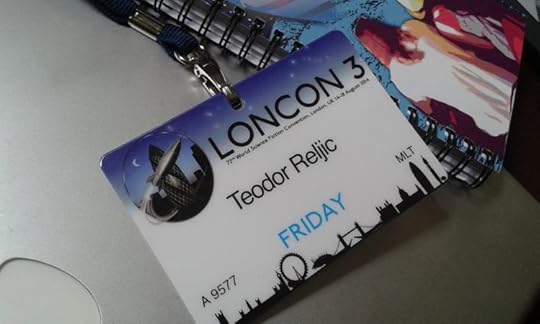
Must not forget to get down on Friday.
Amid a rich variety of panels – it would have been physically impossible to attend enough of them to get a representative sample – I was disappointed to find that a victim mentality still reigns supreme among certain elements of the science fiction and fantasy community.
I think this reduces our – ultimately quite human and universal – need to clarify and classify into its least productive mode.
While a discussion entitled ‘When is a fantasy not a fantasy’ did yield to some cogent and perceptive observations about the ways we tend to process fantastical works of fiction, it all unfortunately returned to a rather depressing cul-de-sac: that what we’re discussing here remains the purview of dedicated fans, whose passion the ‘mainstream’ world will never understand.
This, despite the fact that “Death to binaries!” ended up being an impromptu slogan of the panel, which included among its ranks Catherynne M. Valente, Jonathan Strahan, Paul Kincaid, Graham Sleight and Greer Gilman (it was moderated by Miriam Weinberg).

‘The Wasp Factory’ at the LonCon Dealer’s Room – an installation in honour of Iain Banks.
Valente, a writer whom I greatly admire for her effusive baroque sensibility and her inspired weaving of myths and folktales into contemporary and often erotically charged narratives, disappointed me by assuming a boringly predictable stance towards ‘the mainstream’.
Though it was buttressed by an interesting central point – that people who aren’t all that familiar with fantasy literature are actually more comfortable with reading ‘straight’ fantasy than any slipstream variation that mixes various narrative registers – Valente dismissively waved away “Booker Prize books or whatever” as if they’re a homogenous, over-privileged bunch that deserve our derision by default.
The old chestnut that mainstream writers use “genre ingredients” with less rigour than genre writers, often levelled at the likes of Margaret Atwood and Kazuo Ishiguro, was trotted out once again, with Valente observing that this amounts to “playing with a shiny new toy without reading the instruction manual”. These writers use genre elements as “just a manner, a flash of colour”, favouring emotional impact at the cost of cogent, convincing world-building.
But I would argue that these writers are to be commended for accomplishing their narrative goals without having to worry about finicky world-building details. A writer is, among other things, an illusionist: they are supposed to convince you to plunge into the world they’ve created, and they shouldn’t be “shamed” if they succeed in doing so in a way that you don’t like.
This isn’t to say that categories of literature shouldn’t exist. Beyond commercial considerations – i.e., in which section of the bookshelves you’re expected to stuff certain books in, and how you want to ‘target’ your marketing – I still maintain that it’s useful to discuss how boundaries reflect on our reading experience and expectations.
It’s a factor that the above-mentioned panel did in fact grapple with, which makes the overall notes of victimization all the more deflating.
Paul Kincaid rightly complained that “fantasy is the wooliest word in the English language” – an apt opening salvo for a discussion which then sought to edge out some particulars about this all-embracing genre, or more specifically, our perceptions of it.
While Jonathan Strahan pointed out that certain books are “demonstrably” works of fantasy – the kind of books you wouldn’t hesitate to slide into the Fantasy shelf in bookstores – and that cover illustrations can in fact powerfully calibrate our expectations of the text, almost to the point where the text is altered completely (there goes branding again), this strand of thinking also accommodated a richer part of the discussion: that it is ultimately only the reader who can define a genre.
This is where art triumphs over pornography, I think.
Pornography is not narrative. Pornography is not interested in stories. It is uni-directional: Set phasers to ‘Arouse’. Storytelling allows for ambiguity, but the best stories take advantage of established boundaries – even when they aggressively run counter to them – to maximize the effects of stories.

LonCon/BarCon – alcoholic lubrication aplenty.
To obsess over a perceived, looming bogeyman called ‘The Mainstream’ is to miss the wood for the trees. Let’s focus our attentions instead on what the literary traditions we want to work in have left us. If it was anything, LonCon was a celebration of the kind of communal fellow-feeling that creating distinctions in the first place can create. Let’s keep reminding ourselves that these distinctions can exist to give us a starting point: to add texture to our work and our discussions.
Otherwise we risk of them turning into something they turn into all too often: marks of segregation and exclusion.


September 3, 2014
Housing
Birzebbugia, Malta, 2010
“I was taken with the thought that these were dream homes, literally: here was space from which history had been expunged, and an optical illusion of history set up in its place. The real houses were elsewhere on earth. Was this what one built when one lived with a sense of being precariously positioned in space and time? I imagined them all to be sleeping an enchanted sleep that would go on through the years, until they were embedded in a thick enough buildup of time to wake without vanishing into the air” – KJ Bishop
*


September 1, 2014
The World’s A Stage | Edinburgh Fringe 2014 Reviews – Part 3
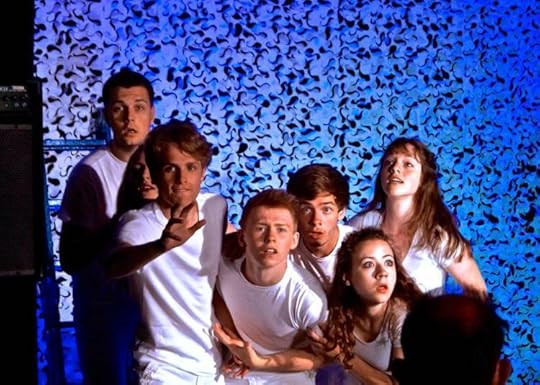
Small Gods: Scandimania
AUGUST 4 – 13:10 – Scandimania: Gods of Ice and Fire
A hearteningly good student performance, this potted history of Norse myth felt neither bookish nor amateurish.
In what was thankfully a more straightforward homage to Norse mythology than Jethro Compton’s Loki, Sundial Theatre, the young troupe behind Scandimania succeeded in not only bringing the Norse sagas to life – impressively speeding through Creation to Ragnarok in nary an hour – but in delivering a finely polished performance using little more than their bodies and minimal props (read: a single, creatively applied ladder).
Dressed from head to toe in white, the team relied on traditional storytelling and crisply choreographed physical performances to present their take on the ever-popular epics. The minimal sets and equally sparse ‘costumes’ were a wise choice, as it allowed the story to unfold without any distractions.
It was also a good trick to keep any tackiness at bay and play into what we can assume was a modestly budgeted affair.
The company also deserve kudos for allowing their show to come to life despite the uninspiring venue – a hotel conference room is hardly an adequate arena for epic battles and cataclysmic events, but like the best storytellers, Sundial Theatre sucked you in.
This kind of event is precisely the sort of thing you hope to find at the Fringe – up-and-coming, but highly promising stuff.
AUGUST 5 – 23:50 – Comedy Sans Frontieres

From left: Francesco De Carlo, Igor Meerson, Eddie Izzard, Dylan Moran, Michael Mittermeier and Yacine Belhousse
Eddie Izzard and Dylan Moran bring a quartet of international comedians to a sold-out crowd, for a mixed-bag night of entertainment whose good intentions, however, are undeniably heartwarming.
Eddie Izzard. Dylan Moran. Names that doubtlessly enjoy top billing in the minds of many stand-up comedy fans… particularly those of us who like our comedy a little bit absurd and a little bit surreal (and a lot of bits British).
So when I heard that this particular duo was headlining a one-off show in the very city that I was planning on visiting, I booked my tickets immediately. Who cares what the event will be about, exactly, if that pair will be leading it, I thought?
But it turns out that this was exactly the kind of reaction Izzard – the erstwhile mastermind and compere of the event – was hoping for. Essentially, with this event Izzard and Moran were using their fame for a higher purpose: namely, to bring comedians from non-English-speaking countries to a mainstream English-speaking audience.
Though it was disappointingly male-centric for an event that placed much stock in promoting diversity (“You are the future,” Izzard told us as he thanked us for indulging his cosmopolitan comedy experiment), the gig was consistently entertaining.
Taking into account the fact that stand-up in a secondary language is bound to be a notoriously difficult thing to pull off, some acts ran more smoothly than others. Germany’s Michael Mittermeier emerged the strongest of the international bunch. Not only was he entirely at ease with the English language, his set had a polished pace and tempo that a couple of the others couldn’t exactly boast of.
Despite his otherwise diminutive height, he certainly stood head and shoulders above Russia’s Igor Meerson and Italy’s Francesco De Carlo, whose material was decent but whose delivery was less of a stand-up comedy show and more of a storytelling session down at the pub.
Meerson, however, offered up some interesting cross-cultural insights. Stand-up comedy would never work in Russia, he told us, because upon hearing someone complain about their life, Russians would likely just scramble up on stage and try to help with whatever problem the comedian may be struggling with.
Like the rest of his travelling comedy comrades, France’s Yacine Belhousse placed a lot of stock in cultural stereotypes, even basing one of his gags around a hypothetical Hollywood blockbuster – a superhero film that would embody every stereotype imaginable (“It would be the only way the French could get leading roles”), while also doing his bit to demystify the idea of Paris as an eternally romantic city.
Izzard and Moran (the latter an Edinburgh resident) were on relaxed and confident form, with Izzard in particular clearly proud of the cadre of international comics he had managed to round up for our delectation. Perhaps a more sinister underbelly to all this is Izzard’s previously declared interest in running for politics; “you are the future,” smacks of exactly the kind of feel-good-factor rhetoric you’d expect a politician to peddle in (in the context of Edinburgh, this has an added bitter edge: Izzard had previously done fundraising gigs for the ‘No’ camp ahead of the Scottish Independence referendum).
Moran shuffled on stage thankfully free of any such baggage, delivering a three-part monologue with his trademark brand of inventive, meandering wit. (During the preamble, Izzard said, “I tend to be surreal and bonkers. Dylan is surreal and poetic”).
By now a consummate professional – if not something of a stand-up comedy legend – the Irish actor-comedian assumed the role of a crazed Fringe participant (bemoaning the fact that nobody has yet some to see his broomstick-installation version of Macbeth), confessed his frustration with Edinburgh machismo (I like the festival, he said, at least it brings in smiling people) and as a side-splitting coup, regaled the audience with a few paragraphs from his Fifty Shades of Grey pastiche.
*
And so ends my round-up of Edinburgh Fringe highlights. Expect the blog to return to its regularly scheduled programme soon. Now that doesn’t mean I in fact know what this programme consists of, but there we are.


August 27, 2014
High & Low | Edinburgh Fringe 2014 Reviews – Part 2
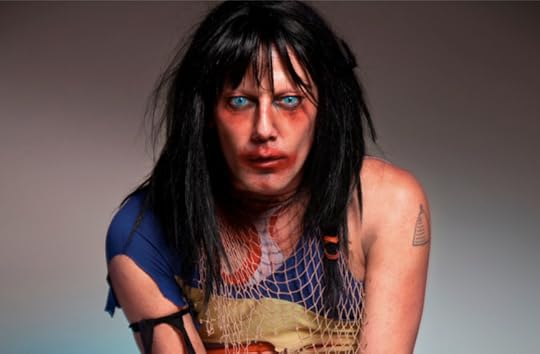
Southern-Fried Patti Smith: Christeene
AUGUST 2 – 22:10 – CHRISTEENE: The Christeene Machine
Southern-Fried Patti Smith in drag, with a dash of acid on a bed of sleaze.
Down in the Cowgate’s smoky Underbelly venue, the audience was being assaulted by a different kind of projectile fluid (see Part 1): a suspect jet of what we can only hope was water, emanating from Austin, Texas-based drag performer Christeene’s faux-vagina.
This prop pretty much sums up the concert-cum-cabaret act: unapologetically irreverent and often gross, but with an impish childishness that makes it quite endearing at the same time.
With songs like ‘Fix My Dick’ and ‘Tears from my Pussy’ (the latter – surprise surprise – being the number that gave way to the aforementioned projectile genitalia), Christeene’s schtick is far from subtle. But coupled with the performer’s Austin Texas pedigree, the between-the-songs banter is what makes the experience truly worthwhile.
As a stage presence she is both creepy and coddling. The mismatched pupils and blacked-out teeth are suggestive of an unsavory alleyway encounter, but Christeene milks this unsettling character to entertain rather than disturb.
Playing the dazed American visitor – one from the Deep South, no less – Christeene describes Edinburgh as being “like Disneyland… only with no creepy mouse comin’ up to ya and shit”.
“There be castles, fireworks and men in skirts playin’ music outta a sack… where the fuck am I?!”
But beyond the expletive-ridden drag-hillbilly facade there’s a genuinely romantic core to Christeene’s act, if you can believe it.
Accompanied by her two trusty dancers C-Baby and T-Gavel (refreshingly against-type, they’re not shy to let some flab hang out), that the Christeene Machine is all about losing your inhibitions should come as no surprise. But Christeene is also on a mission to liberate us from the deadening structures that crush our individuality and invade on our intimate private space.
Noting how ridiculous we’d all look tapping away at our smartphones – which we’re all “slaves” to – while also negotiating Edinburgh’s often-cobbled streets, Christeene implores the audience to safeguard that “little pony inside of you”, and to not let it be harvested by the relentless and numbing churn of the zeitgeist.
It’s not too dissimilar from the right-on live performance preaching from the likes of Patti Smith (whom I was also lucky enough to catch – on my adoptive home island, no less – earlier this year). Except that thankfully, Christeene does away Smith’s brand of post-hippie pseudo-spirituality in favour of an (un)healthy dose of Southern-Fried sleaze.
AUGUST 3 – 15:30 – Simon Callow in Juvenalia
A politically incorrect diatribe that grasps at topical relevance, but still boasts a melancholy core if you’re patient enough to look for it.
It is a testament to the healthy variety one can find at the Fringe (if, that is, you do in fact manage to machete your way through the stand-up comedy) that you can quite literally descend into an underworld to experience an act like Christeene on one day, and then head back up the next to watch a National Treasure (™) like Simon Callow channel an ancient Roman satirist.
That’s not to say that Juvenalia, a revival of Callow’s own 1970s take on Juvenal’s Satires, puts much stock in pomp and ceremony.
Working off translation by Peter Green (as adapted by Richard Quick), the show pitches the condensed and cherry-picked selection of Juvenal’s vitriolic rants against… well, pretty much anyone and anything… as nothing other than a stand-up comedy show (the show’s poster tagline spells it out for you: ‘Stand-Up Comedy as last delivered in AD 100′).
That particular gimmick may not have been the wisest. While taking the form of a sustained monologue, much in the same way as your run-of-the-mill stand-up comedy show would – Callow’s subject is not an easy pill to swallow, and the claims of Juvenal’s contemporary relevance are strained at best.
The fact is that the Roman satirist, while acerbically entertaining, remains a product of his time. That he is ‘democratic’ in his vitriol – virtually no class of citizen or ruler is spared from his acid tongue – cannot conceal the unpleasant prejudices that power his most sustained rants.
Juvenal’s misogyny is particularly hard to root for, and the production does nothing to contextualise it in a way that would make it palatable.
But though Juvenalia is sold to us as a stand-up comedy show that happens to be delivered from beyond the grave by a long-dead historical figure, it’s saving grace is in how it differs from other exponents of the genre it’s trying to ape.
By the end of the performance, you realize that, far from being a meandering monologue, Juvenalia allows for a change of pace.
Come the final act, we’re allowed a peek into a weary Juvenal; anger takes a back seat to reveal what’s at the core of his philosophy: a call for virtue in simplicity.
Though the show doesn’t do itself any favours by trying to compete with the myriad stand-up comedy events at the Fringe, the negative backlash it’s received feels slightly disproportionate.
Rather than a still-topical piece of mordant satire, Juvenal stands on its own as an intriguing character study – a sustained ‘unpeeling’ of a bitter man which at the end allows us to see the pain within.
Though Callow delivers his lines with gusto, judging by the marketing campaign and general pitch of the show, it seems as if he may be blind to the show’s true strength… even after all these years.
Next time: SCANDIMANIA! IZZARD!



